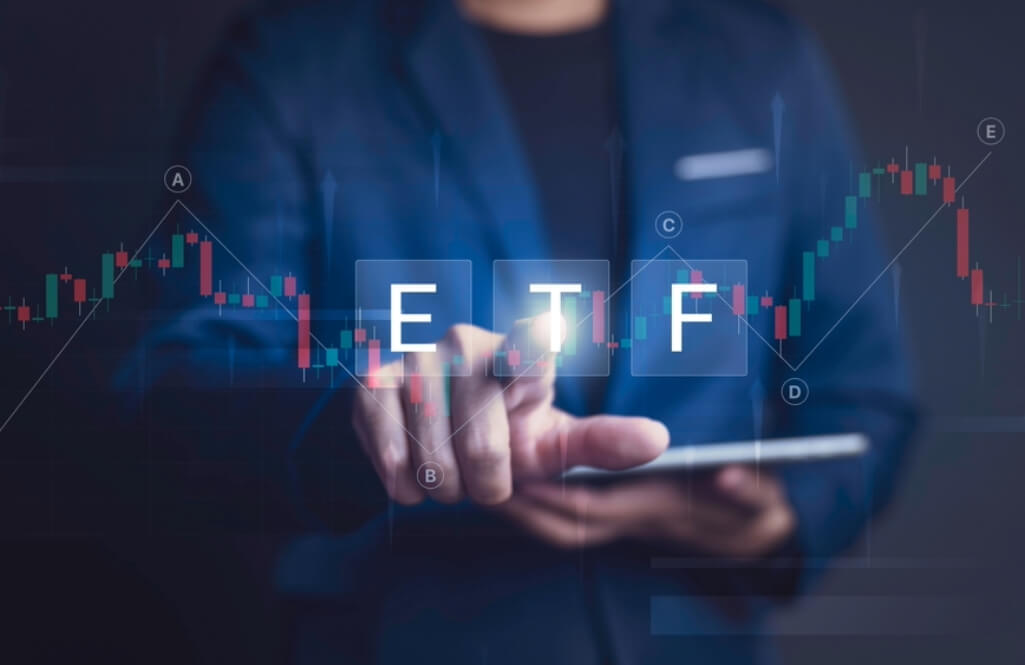Introduction to Exchange-Traded Funds (ETFs)
Exchange-traded funds (ETFs) emerged in the early 1990s and have since revolutionised the investing landscape. Combining the best of both worlds—mutual funds and stocks—ETFs offer investors diversified, accessible, and cost-effective investment opportunities. They trade on exchanges just like stocks, allowing for price fluctuations throughout the trading day based on market demand. This unique structure enhances their appeal and contributes to their durability and popularity in the financial markets.
ETFs can mimic various market indices, such as the S&P 500 or the Barclays Capital U.S. Aggregate Bond Index. While they strive to replicate these indices’ returns, minor tracking errors can occur, leading to slight deviations in performance. Despite this, the allure of ETFs continues to grow, with assets under management significantly increasing, now representing about 30% of total U.S. fund assets as of late 2023.
Advantages of Investing in ETFs
Diversification
ETFs inherently provide investors with the opportunity to diversify their portfolios. Whether the focus is on broad markets, specific asset classes, sectors, or industries, ETFs cover a wide range of investment needs. This diversification is instant and accessible, reducing the risk associated with putting all one’s eggs in one basket.
Cost and Accessibility
One of the standout features of ETFs is their cost-effectiveness. The average expense ratio for index ETFs was 0.16% in 2022, significantly lower than many mutual funds. For example, the SPDR S&P 500 ETF (SPY) boasted an even lower expense ratio of 0.09% in 2024. This financial efficiency is paired with high liquidity, meaning popular ETFs can be easily bought and sold with minimal bid-ask spreads.
Additionally, the flexibility to trade ETFs throughout the day—much like stocks—allows investors to respond quickly to market changes. This can be particularly advantageous during volatile market conditions, allowing for strategic entry and exit points.
Tax Efficiency
ETFs are generally more tax-efficient than mutual funds due to their structure and the mechanics of in-kind transfers. Unlike mutual funds, which often incur capital gains taxes through frequently buying and selling assets, ETFs typically generate fewer taxable events. This makes them an attractive option for tax-conscious investors.
Challenges and Considerations in ETF Investment
Despite the numerous benefits, ETFs come with their own set of challenges that investors should consider.
Additional Costs and Excess Trading
While the base expense ratios of ETFs are low, other costs, such as broker commissions and transaction fees, can add up, especially with frequent trading. Although typically narrow for popular ETFs, the bid-ask spread also represents a hidden cost that can impact investment returns.
The very nature of ETFs, allowing for intraday trading, might encourage excessive trading. Investors can be tempted to react impulsively to market news or trends, potentially straying from their long-term investment strategies. This behaviour can lead to increased costs and suboptimal investment outcomes.
Potential for Lower Returns
While reducing risk, the diversification offered by ETFs can also dilute potential returns. Compared to selecting individual stocks that may outperform the market, a diversified ETF mirrors the performance of its index, which includes both winners and losers. This might result in overall returns that are lower than those achievable through more targeted investments.
Navigating the Landscape of ETFs
ETFs are not a one-size-fits-all solution; they vary widely in their objectives and underlying assets. Broadly speaking, ETFs can be categorised into actively managed and passive index funds. Actively managed ETFs, comprising about 15% of the market in 2023, aim to outperform benchmarks by strategically buying and selling securities. Meanwhile, passive index ETFs, like the pioneering SPDR S&P 500 ETF Trust (SPY), aim to replicate the performance of a specific index.
When selecting an ETF, it is crucial to consider factors such as the fund’s performance history, expense ratio, liquidity, and alignment with your investment goals and risk tolerance. Understanding the differences between various types of ETFs and how they fit into your overall investment strategy will help you make informed decisions that enhance your portfolio’s potential while managing exposure to risk.
ETFs offer a compelling blend of accessibility, cost efficiency, and diversification. However, like all investment vehicles, they come with inherent risks and considerations. By carefully assessing these factors and aligning them with personal investment objectives, investors can effectively leverage ETFs to build a resilient and growth-oriented portfolio.
Cryptocurrency and Blockchain Technology
Cryptocurrency and blockchain technology have reshaped the financial landscape, offering new investment opportunities and challenges. Among these innovations, Crypto ETFs stand out as a pivotal development, attracting both seasoned investors and new entrants with their blend of traditional exchange-traded fund structure and cutting-edge cryptocurrency assets. This article delves into the nature of Crypto ETFs, explores their advantages and regulatory hurdles, and discusses their impact on the broader investment ecosystem.
Understanding Crypto ETFs
Crypto ETFs are designed to track the performance of one or several cryptocurrencies, such as Bitcoin or Ethereum, through a tradable security on a stock exchange. This allows investors to gain exposure to cryptocurrencies without the complexities of direct ownership, such as setting up wallets and dealing with exchange-specific vulnerabilities. The first significant breakthrough in the U.S. market occurred with the approval of the ProShares Bitcoin Strategy ETF (BITO) in 2021, which is a futures-based product. This approval marked a significant regulatory milestone, setting a precedent for future crypto ETFs based on futures, which are perceived as more regulated and, therefore, safer for investors than direct cryptocurrency holdings.
In January 2024, the landscape evolved further when the U.S. Securities and Exchange Commission (SEC) approved the first spot Bitcoin ETFs. This approval triggered a robust market response, with Bitcoin’s value surging by approximately 60% in the first quarter alone. Despite this progressive stance on Bitcoin, the SEC has remained cautious regarding Ethereum and other cryptocurrencies, especially those that involve staking mechanisms. This cautious approach stems from concerns over market manipulation, liquidity, and the proper custody of assets—factors that are critically important in maintaining a stable and secure market environment.
The Benefits and Risks of Crypto ETFs
Market Accessibility and Simplified Investment
Crypto ETFs significantly lower the barrier to entry for investors interested in cryptocurrencies. Investors can bypass the technical challenges of buying, storing, and securing cryptocurrencies by purchasing ETF shares through traditional brokerage accounts. Moreover, these ETFs provide a familiar regulatory framework, which can offer a sense of security and legitimacy to investors wary of the volatile crypto market.
Regulatory Challenges and Market Volatility
Despite their benefits, Crypto ETFs carry unique risks, primarily due to cryptocurrency markets’ nascent and highly volatile nature. Regulatory concerns, particularly from bodies like the SEC, focus on issues such as market manipulation and the stability of underlying assets. These concerns are not unfounded, as past fluctuations in cryptocurrency prices have demonstrated. Moreover, varying degrees of regulatory compliance among crypto exchanges add to these concerns. Additionally, the approval process for new types of Crypto ETFs, especially those involving innovative technologies like staking, remains stringent and uncertain.
The Broader Impact of Crypto ETFs on Investment Strategies
Crypto ETFs are redefining investment strategies by providing an alternative portfolio diversification and risk management avenue. As these products become more integrated into mainstream financial systems, they offer a hedge against inflation and currency devaluation, particularly in less stable economic environments. Furthermore, including cryptocurrencies in diversified investment portfolios can help spread risk and enhance potential returns, albeit with a higher risk profile than traditional assets.
Choosing the Right Platform for Buying ETFs
Online Brokers and Traditional Broker-Dealers
ETFs are readily available through both online brokers and traditional broker-dealers. This availability offers investors a familiar route to add ETFs to their portfolios. These platforms provide access to a wide range of ETFs, including those that track major indices, specific industries, or novel investment themes. When selecting a broker, it’s essential to consider several factors. These include the user interface, customer support, trading fees (if any), and the educational resources available.
Robo-Advisors: A Modern Approach
For those seeking a more hands-off investment experience, robo-advisors like Betterment and Wealthfront present an appealing alternative. These automated platforms use algorithms to manage investments based on the user’s risk tolerance and financial goals. Robo-advisors typically invest in a diversified portfolio of ETFs, adjusting the allocation as necessary to align with the investor’s target outcome. This option is particularly attractive for newcomers to investing or those who prefer to set and forget their investment strategy.
Understanding ETF Expense Ratios
An ETF’s expense ratio is a critical factor to consider as it directly impacts the fund’s returns. This ratio represents the annual cost of owning the ETF, covering management fees, administrative expenses, and other operational costs. Fortunately, ETFs are known for their relatively low expense ratios, especially those that track indices, due to their passive management style. Comparing expense ratios among similar ETFs can significantly influence your investment’s cost-effectiveness over time.
Commission-Free Trading and Accessibility
Most modern online investing platforms and apps, such as Robinhood, now offer commission-free trading. This development has democratised access to investing. It allows more people to invest in ETFs without worrying about the costs of buying and selling shares. Moreover, many retirement account providers also support ETF investments. This enables individuals to include these versatile instruments in their long-term savings plans without transaction fees.
Utilising Tools for Smart ETF Selection
One of the most effective ways to select an ETF is by using an ETF screening tool available on most investment platforms. These tools allow investors to filter ETFs based on various criteria, such as expense ratios, trading volume, past performance, and underlying holdings. By adjusting these filters, investors can narrow down their options. This helps them find ETFs that best meet their investment goals and risk tolerance. Additionally, considering the trading volume is crucial. It can help ensure that the ETF is sufficiently liquid, allowing for easier buying and selling of shares on the market.
Buying ETFs has never been easier, thanks to a plethora of platforms and tools designed to enhance the investment process. You can choose from a traditional broker, an innovative online platform, or a robo-advisor. These options allow investors to explore and invest in ETFs efficiently. You can optimise your investment choices by understanding expense ratios, leveraging commission-free trading, and using advanced screening tools. Furthermore, you can strategically build a portfolio that aligns with your financial objectives and investment style.
The future of Crypto ETFs looks promising but will heavily depend on ongoing regulatory developments and the maturation of the cryptocurrency markets. As more investors and institutions recognise the potential benefits of including cryptocurrencies in their investment strategies, demand for more varied and sophisticated Crypto ETFs will likely grow. Consequently, this will drive further innovation and possibly lead to broader acceptance of cryptocurrencies. Cryptocurrencies could become a legitimate and valuable component of a diversified investment portfolio.
The post Introduction to Exchange-Traded Funds (ETFs) appeared first on FinanceBrokerage.


































